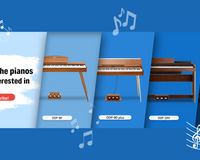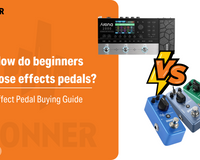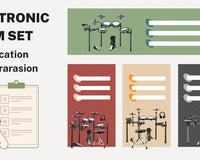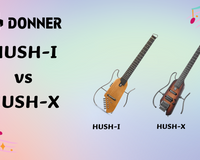However, playing a suitable piano is just the first step in learning the piano. We should know the basics of piano learning, such as the notes, the grand staff, and so on. What’s more, playing the piano is not just about pressing the right keys. Everything from the way you sit to how you place your fingers on the keyboard will affect your sound on the piano.
Teaching yourself to play the piano is not very easy, but we try to make it as concise as possible for you to follow. The first part we need to pay attention to is the basics of piano knowledge—good posture for playing the piano.
Step 1: Good posture starts from day one.
Good posture is an important foundation for enjoying your time at the piano. Fixing incorrect physical postures can be challenging, so developing an appropriate posture from the beginning is essential.
Sitting Position
Your seat should ideally be an adjustable bench designed for playing the piano. Place your bench parallel to the middle of the keyboard and then adjust the distance from the piano so that you can reach all the keys in a comfortable hand position.Don’t sit hunched over. Although sitting straight may be a little difficult for some beginners who are used to chairs that support their backs. But their back strength will be increased gradually through a long time of practice.
Pay attention to your shoulders and arms. The most important thing beginners should keep in mind is to relax. Roll your shoulders back and forth a few times when you feel stressed, then let your arms hang loosely by your sides. When you place your hands on the keyboard, relax your forearms and wrists.
Make sure your feet are flat on the floor. If the floor is too low for your feet to stand flat, you can use a mat or carpet to increase the height of the floor.
Hand Position

When you put your hand on the keyboard, keep your fingers relaxed and slightly bent, not straight. Bend your fingers down to make your fingertips hit the keyboard as if you are holding a small ball within your palm.
However, your thumb is the exception to the "keep bending" rule. You can keep your thumb straight but relax. Relax your wrist, shoulder, and forearm if they feel rigid, but maintain your fingers on the keys. If you’re comfortable with these postures, you’ll be more motivated to practice!
Step 2: Play your first melody.
After learning the correct posture for playing the piano, why not press some keys to create some sounds now? There are seven notes of music written in the English alphabet: A B C D E F G.
Put your thumb on the middle C. A "C" key is the first white key of every key group on the keyboard. Usually, a key group on the keyboard consists of two sets of black keys (a set of two, the other of three) and the white keys connected to them.
The key to the right of the C key is D, then, E, F, G, back to A, B, and the next C.
If your piano is an 88-key keyboard, Middle C is the fourth C from the left. If your keyboard has 61 keys, Middle C is the third C from the left. And the simplest way to find Middle C is finding the C note which is the closest C to the middle of the keyboard. And then press keys at will and listen to each of them.
(Middle C in 88-key keyboard)

(Middle C in 61-key keyboard)
The following notes are simplified sheet music of Ode To Joy by Ludwig van Beethoven. It is very simple and you can master it just within several times. 
E E F G G F E D C C D E E D D -
E E F G G F E D C C D E D C C -
Congratulations! You just played your first song and your first classical melody. You may also yearn for more melodies to practice, which needs the knowledge of reading music. So let’s dig a little deeper.
Step 3: Reading music is basic!
Why should we read music?
According to Ethnologue, there are more than 4,000 different written languages in the world. However, there is just one standard written language for reading musical notes. Reading music is the ability to read a piece of sheet music and know what those notes are. It takes a long time to practise reading.If you don’t know how to read music, you will have some trouble with your piano playing. Suppose you hear a piece of wonderful music and you want to learn how to perform it. If you can't read the written music, you need to slow it down and play it over and over again. And you are still not sure whether you heard all the notes right.
If you can read sheet music, you will immediately know what the notes are. Written music may look like lines and dots on a sheet now, but you'll soon be reading and playing your first piece of music. With sheet music stands, beginners can learn to read music more efficiently.
The Grand Staff
The Grand Staff, the world's standard musical notation model, comprises two staves: a treble clef and a bass clef. And the staff is made up of 5 lines and 4 spaces. Each line and space has a note attached to it.
As we mentioned above, there are seven notes of music written in the English alphabet: C D E F G A B. And they can be named differently in another system: DO RE MI FA SOL LA SI. These two kinds of systems can be interchanged. For example, if we play the C Major Scale on the keyboard, C represents DO; then D represents RE; E represents MI, and the rest can be done in the same manner.
Treble Clef

The Treble Clef, also called the "G clef", places the G note above the middle C on the second line, which is the centre of the Treble Clef. For pianists, it means you are likely going to play these notes with your right hand.
Bass Clef

The Bass Clef, also called the "F Clef", is a clef placing the F below the middle C on the fourth line of the staff. It’s still based on middle C, which lies in the gap between the two staves on an invisible line. And you will play these lower notes in bass clef with your left hand.
Spaces and Lines
As we mentioned above, there are seven notes in music. And they can be represented by different spaces or lines in the different staff. We can use some tips to help memorise them.
For the Treble Clef: We can simply use the word "FACE" for the four spaces. And the five lines of the treble staff are E-G-B-D-F. So we can use "Every Good Boy Does Fine" (or whatever acronym you like) to help you remember these notes.
For the Bass Clef: The four spaces of the Bass Clef, "A-C-E-G," can be memorised by using "All Cows Eat Grass" or "All Cars Eat Gas." And then using "Good Boys Do Fine Always" as the acronym for the five lines "G-B-D-F-A" of the Bass Clef.
Naturals and Accidentals
Natural tones have no sharps or flats. The best way to show what a natural tone or note is is to look at the piano keyboard. All white keys are considered natural notes, so there are 7 naturals on the keyboard: C-D-E-F-G-A-B.Accidentals consist of two types: sharps and flats. And the black keys on the keyboard indicate sharp or flat notes.

Flat notes mean making a note lower in pitch. And the symbol for a flat note looks like a lowercase "b". Sharp notes are to make a note higher in pitch. The symbol for a sharp, which looks like a pound sign "#", is usually placed before a note to raise it one-half step.
Now you’re good to read some simple piano sheet music like Hallelujah and Moonlight Sonata. Just get it down!
Don’t Forget to Practice!
Last but not least, beginners should take their time to practise the piano. Learning the basics of the piano is quite simple, but becoming proficient usually requires a long time. In general, the more you practice, the better your skills will be. If you want to ensure the clarity of the sound when you practising, you can choose Donner acoustic foam panels to absorb echo and improve the sound quality.Finally, don’t forget to download the free Donner Music app! In addition to good postures and music theory, beginners can find more useful piano video tutorials in Donner Classroom for piano learning. Whether you just want to play your favourite songs and have fun, practising for 15 minutes a day will allow you to progress.
 Ir directamente al contenido
Ir directamente al contenido




















